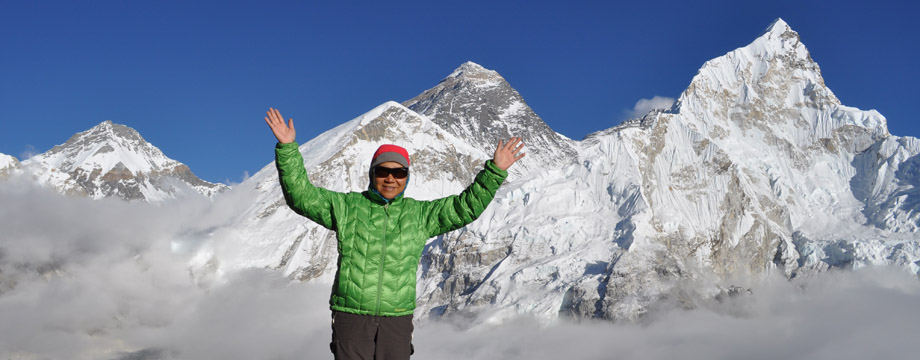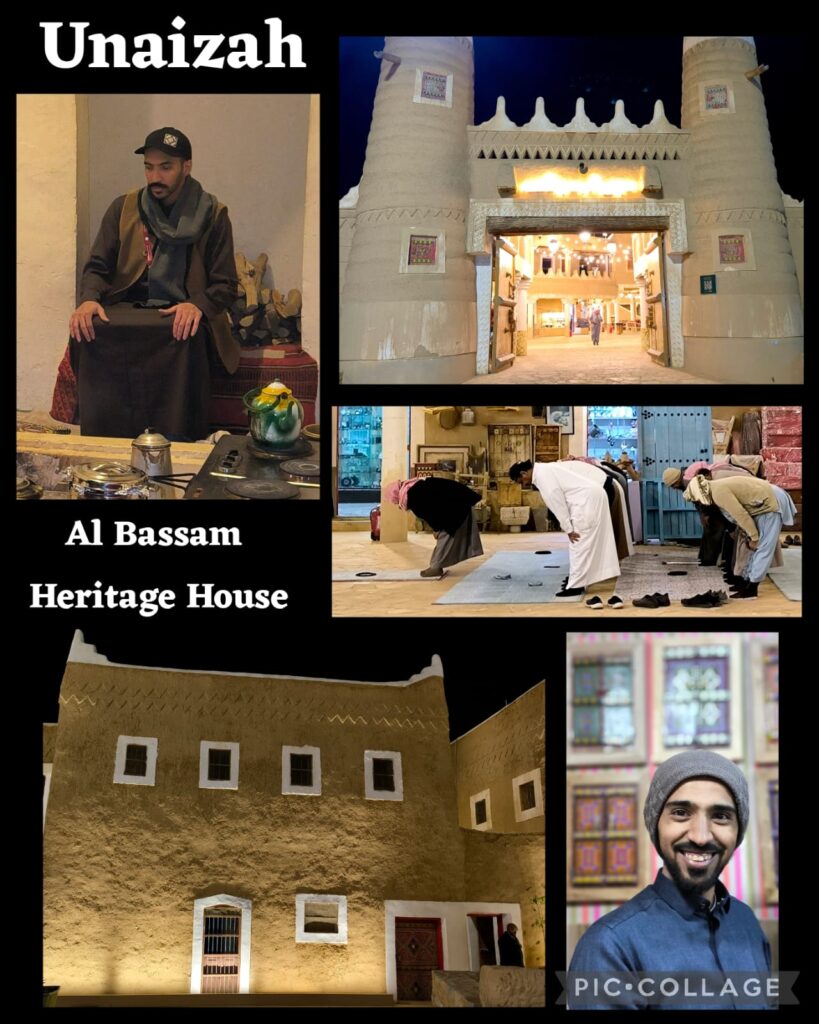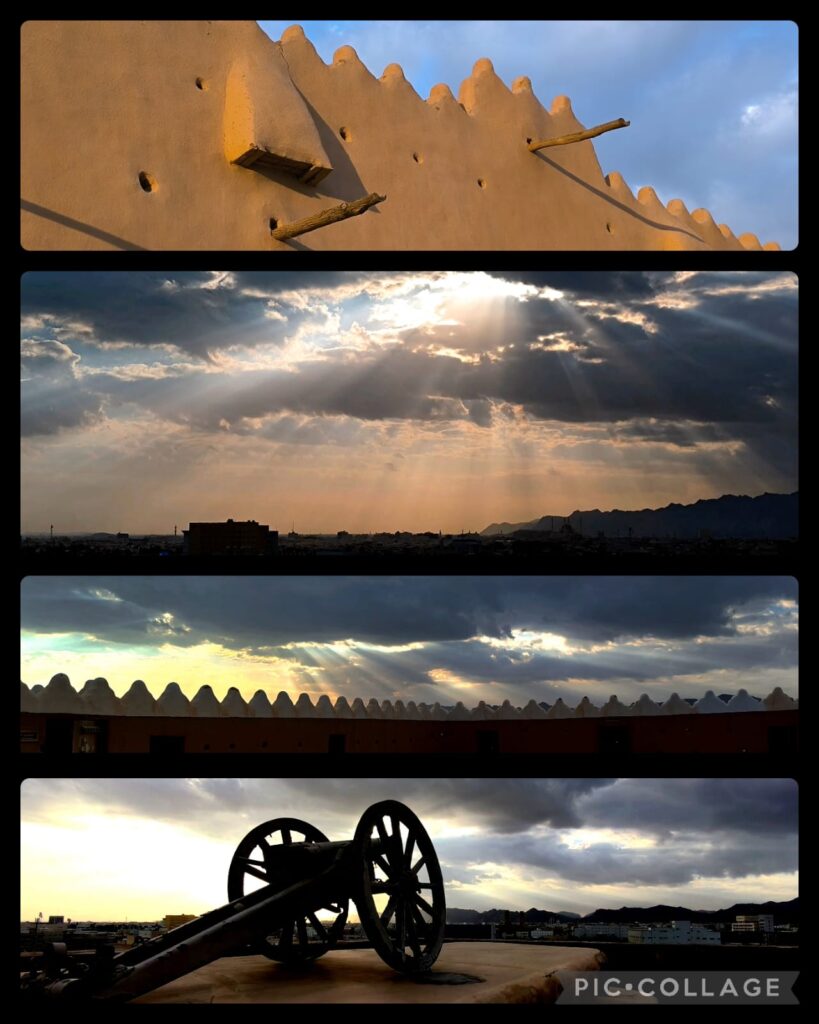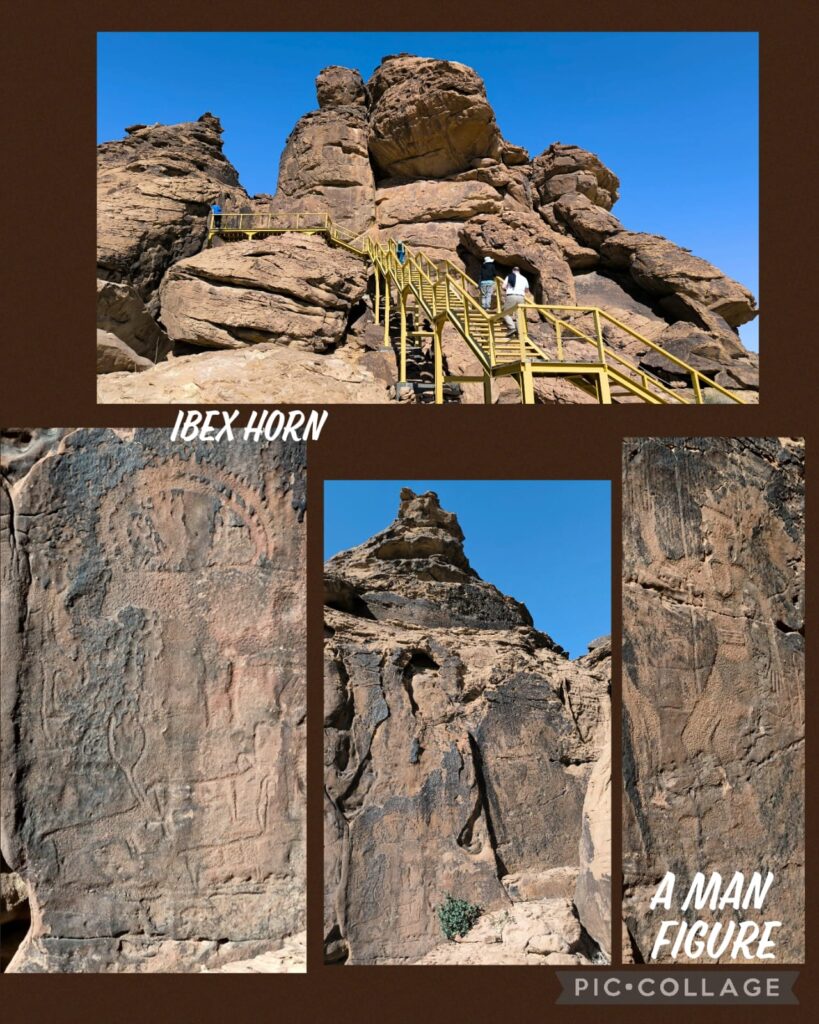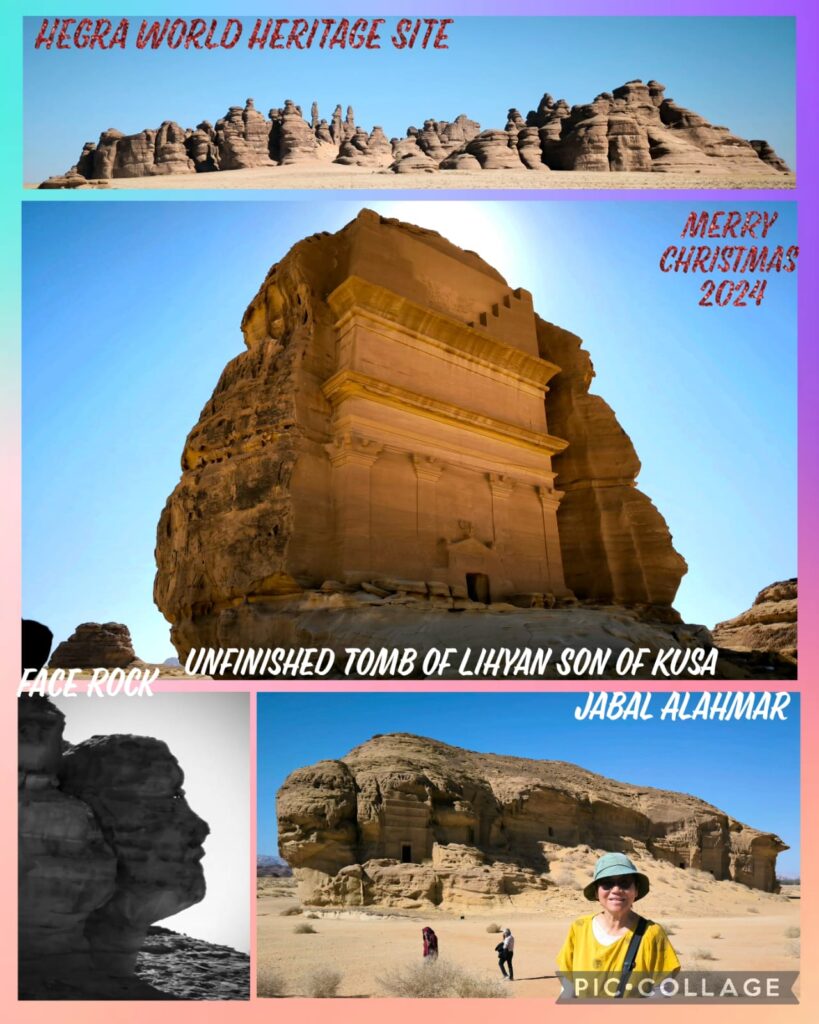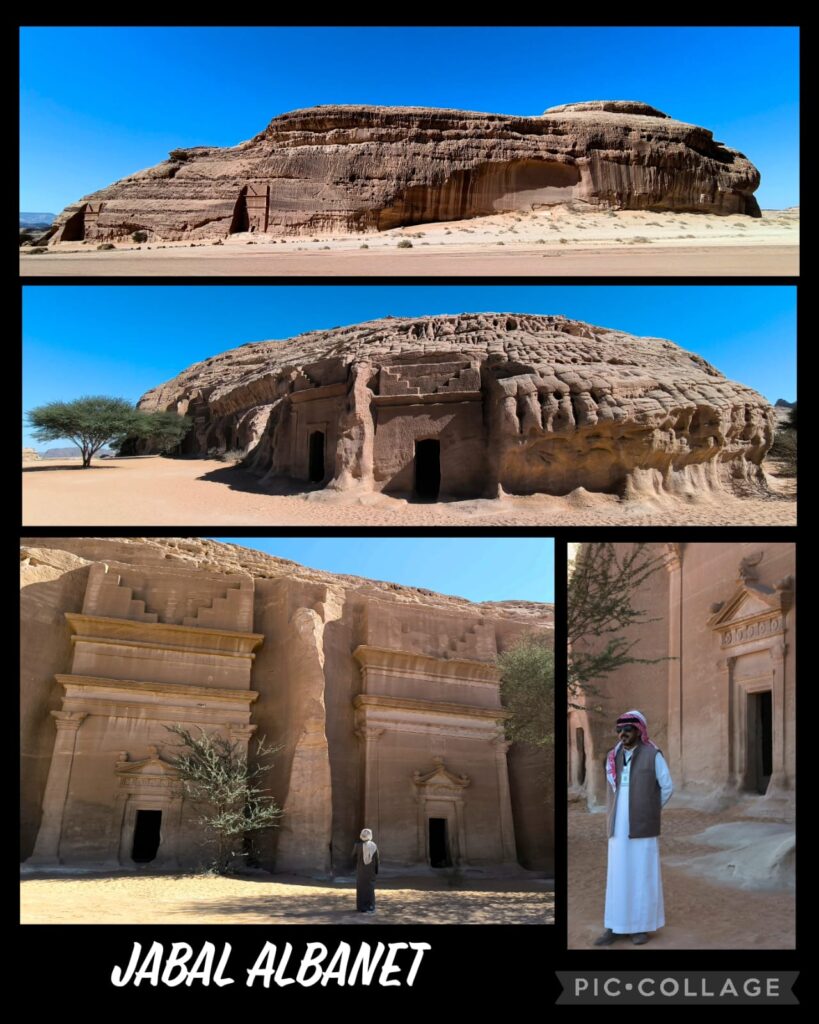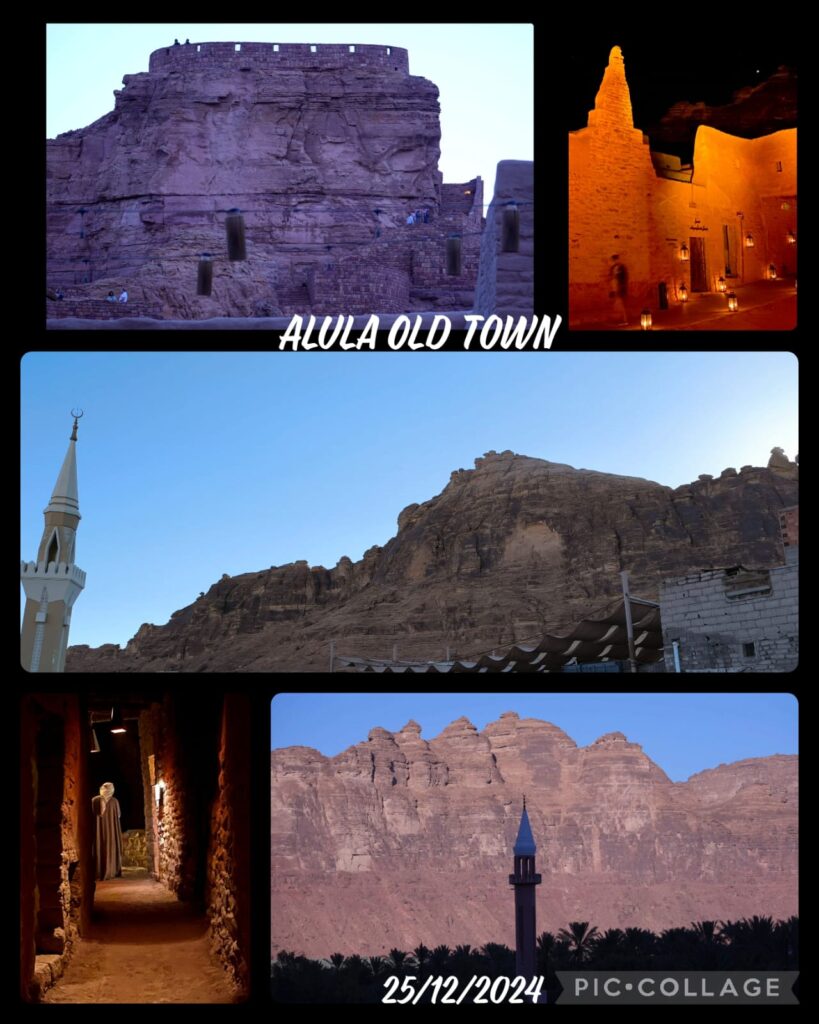Why Saudi Arabia?
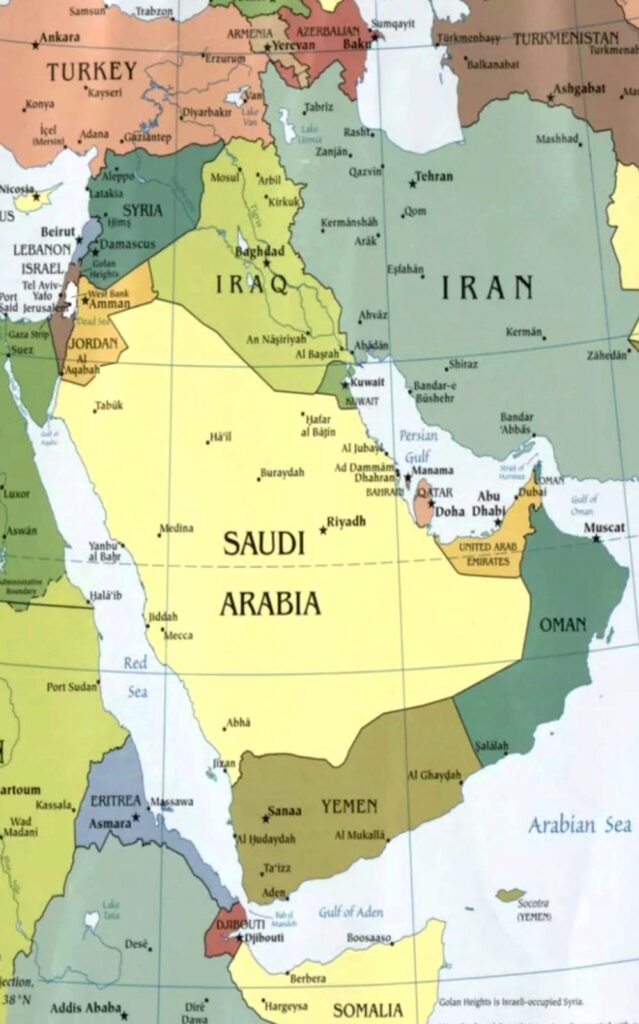
Saudi Arabia which has been open to foreign tourists since 2019, was one of the few Islamic countries that I had not visited in the Middle East. I joined a 13-day Saudia Arabia Explore (20/12/2024 to 1/1/2025) offered by Exodus Travel that I have travelled with many times. I flew from Bergen, Norway to Riyadh on 17 December, met up with Kylie, a friend who joined the same tour on 19 December and the guide Fatmah and five travellers from the UK on 21 December. At the end of the tour, Kylie and I stayed on for two more nights as we would like to snorkel in the Red Sea.
Saudi Arabia
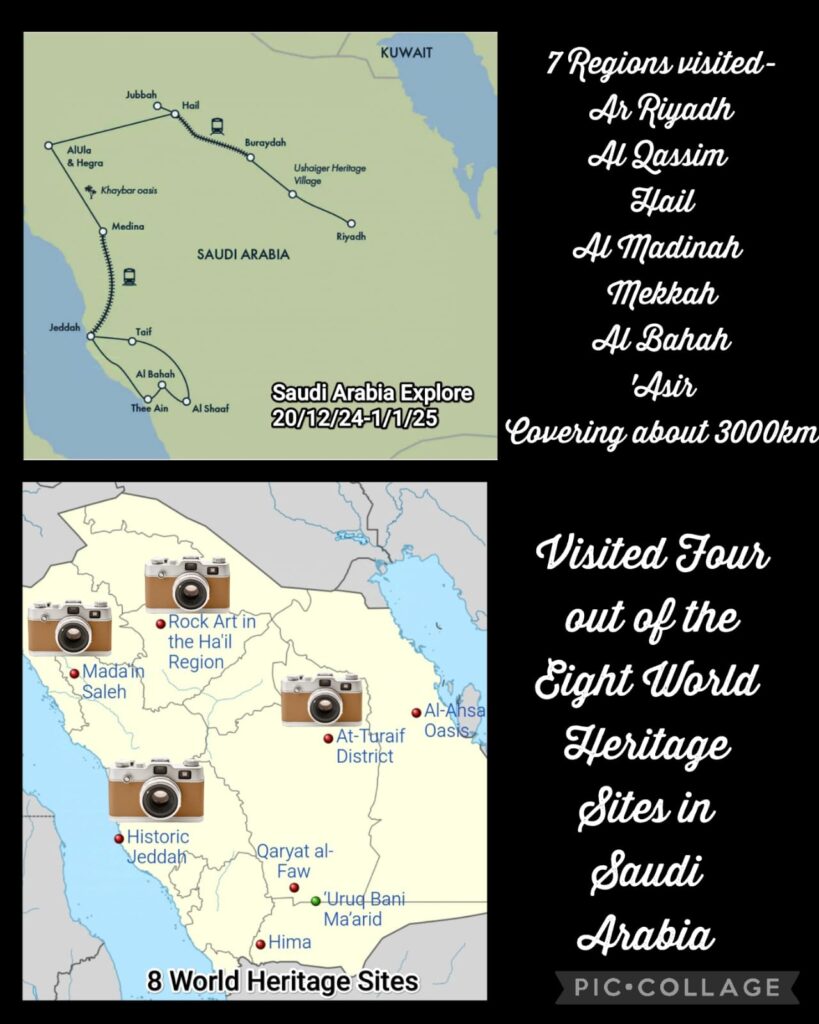
Saudi Arabia (SA), officially known the Kingdom of Saudi Arabia, is located in the centre of the Middle East overing the bulk of the Arabian Peninsula. With the world’s second largest oil reserve and fourth largest natural gas reserve, an area of 2,150, sq km and a population of 37 million, SA is an important regional power. The area was the site of several ancient cultures and civilization with the earliest traces of human activity outside Africa: human habitation in the peninsula dated back to about 125,000 years ago. Rich in cultural heritage with many archeological sites yet to be fully explored, SA boasts eight World Heritage Sites.
The Arabs, also known as the Arab people, are an ethnic group that have been in the Fertile Crescent for thousands of years. According to the Abrahamic tradition, Arabs are descendants of Abraham through his son Ishmael. Before the advent of Islam, much of today’s SA was populated by nomadic pastoral tribal societies apart from trading settlements such as Mecca and Medina. Islamic prophet Muhmmad (c.570-8 June 632 CE) united the population of the Arabian Peninsula and created a Islamic religious polity. Arab dynasties originating from modern-day SA founded the Rashidun (632-661), Umayyad (661-750), Abbasid (750-1517), and Fatimid (909-1171) caliphates and numerous dynasties in Asia, Africa and Europe. Mecca and Medina, both located inside SA, are the two holiest cities in Islam. The Saudi royal family known as the Al Saud can be traced back to emirate of Diriyah dating 1727 and today’s SA was founded by King Abulaziz in 1932 when he united the regions of Hejaz, Najd, Al-Ahsa and ‘Asir. Islam is the state religion and Arabic is the official language.
Riyadh 17- 19 December 2024
I arrived in Riyadh around 11 pm. As I had obtained an e-visa, I went through the immigration quickly. By around 11:30pm, I was able to order an Uber using the free wifi from the airport (A friend could not find me a SIM card for SA in HK and I planned to get one when I got to Riyadh). The car boarding area was dark and crowded. By mistake, I got into a wrong car and the driver did not speak English nor the way to the Women Compound behind the Olaya Street. Both the driver and I did not have wifi and could not check Google map. I told him to call the receptionist of the Woman Compound who spoke English. I finally arrived around 12:30 am on 18 December. When he asked me to pay, I refused believing I had already been charged SAR102 when booking an Uber. When I realised my mistake, I paid him SAR130 as he was an honest person and had a hard time finding his way. He did not take credit card, and the receptionist kindly lent me the money. What an experience!
For the next two days, I hardly did anything and moved beyond the Olaya Street. First, I am getting old and walk very slowly with my hip problem. Second, I had trouble in getting a local SIM card. As a result, I had to stay in the compound whenever I wanted to stay online. The receptionist told me to take uber to a mall to get a card. Actually, there are two outlets near the compound that I could have got a card. I discovered a relatively cheap package offered by Salem for foreign tourists for two weeks: one has to take fingerprints that match those on one’s visa. I tried many times, but my fingerprints for some strange reasons did not match. Henceforth, I had to live without wifi except when I could get free wifi from the hotel or through a hotspot provided by Kylie. Next time, I should try e-SIM. Third, I had a problem with the American Express over overdue payment (I am getting forgetful). My attempt to settle was futile as the transferred money had been credited inadvertently to an old AE card. The whole saga dragged on till 27 December after having paid AE twice. I would only get my money back when I could show proofs of fund transfer to my old account. Ridiculous! AE could have easily traced the money credited to my old account. I would cancel the AE card after getting a refund. Fourth, SA is new to international tourism and I find it not user-friendly. Though I stayed in a relative central area, I had to walk 2.2 km along the Olaya Street to a nearest bank to change USD to SAR (USD1 to SAR3.74). Kylie found exchange service in Narcissus Hotel. But its service was only available to in-house guests. Incredible! Kylie finally managed to change some dollars at the Medina train station. We saw some money changers in Jeddah.
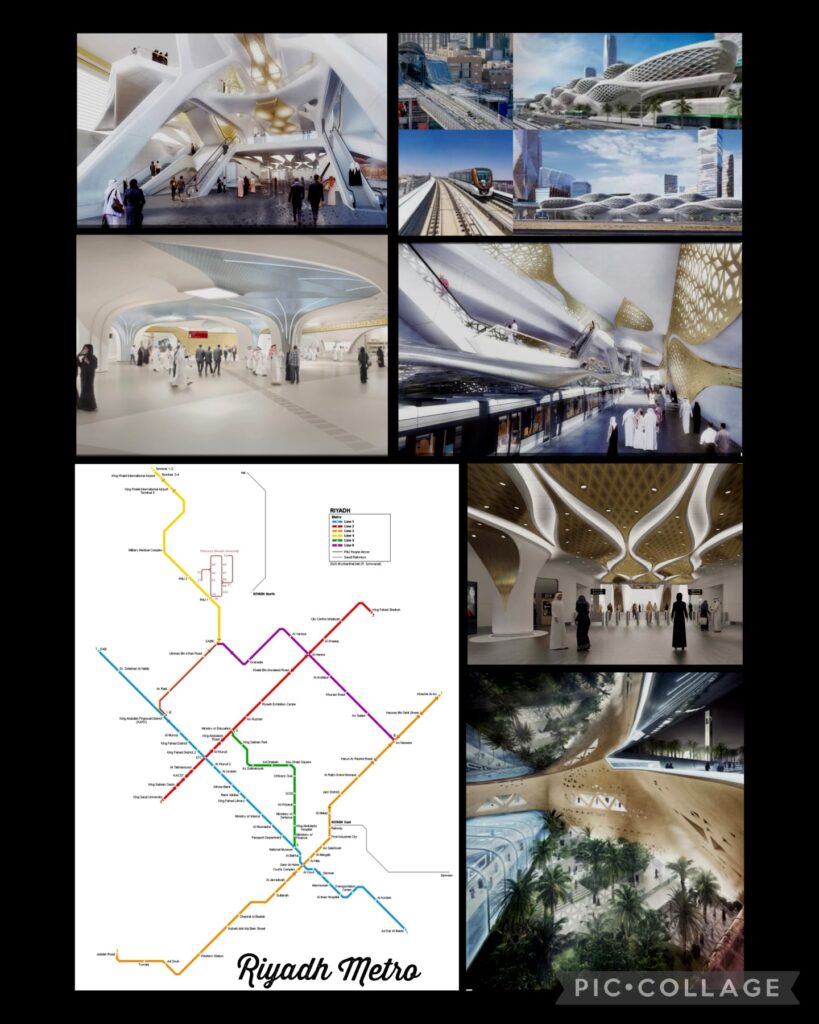
As a result, I had only managed to change money, visited the King Fahad National Library, an Islamic Art Museum and a cluster of galleries, took Bus 9 running along the Olaya Street to Taibah Markets and travelled on the Blue Line that runs from SAB Bank to AD Dar Al Baida (38km with 24 stations). I am most impressed by the new Riyadh Metro spanning 176 km consists of six lines each assigned a unique colour and number i.e. blue-1, red-2, orange-3, yellow-4, green-5 and purple-6. The design of the stations by Zaha Hadid Architects, and standards of the interior of the stations are outstanding. The train cars has three classes: first, family and individual. Passengers pay SAR 4 for 2-hour travel in the metro and on the bus.
Day 1: 20 December Riyadh
As the group from the UK would be arriving in the evening, Kylie and I had a free day. First, we moved from the Woman Compound to the Joudyan Hotel (just across the Olaya Street). Then we joined a 4-wheeled drive tour from 2 to 8 pm. We took Uber to the meeting point (SAR35) and met five other tourists and drove two hours to the Edge of the World, the name of the 1,131m-high cliff lying about 100km from Riyadh at the end of the 800km Tuwaik Mountain Range. It is a top tourist attraction in Riyadh: all tourists come here to watch sunset and the spectacular landscape. The driver was very kind and accompanied me to ensure I did not fall. He also took a few nice photos for me. I turned one into a Christmas card!
Day 2: 21 December – Riyadh
We met Fatmah, our youthful and energetic guide after breakfast. All ladies were given a dark-coloured abaya to wear in Medina. We began our Saudi Arabia Explorer at Ad Diriyah, an ancient oasis town on Wadi Hanifah strategically located in Najd. In 1727, it became the capital of the First Saudi State (1744-1818) under the rule of Imam Mohammed bin Saud. At the heart of Diriyah is At-Turaif, a fortified mud-brick citadel surrounded by 1.5km of defensive walls that was developed into the administrative, military and political hub of the state, focused around the monumental palace of the ruling Saudi Imam. The district was established in the 18th century and rapidly expand during the reign of the second Imam of the First Saudi State.
Restoration began in the 1970s. We spent almost three hours exploring the remains of the Salwa Palace, the mosque, Arabian Horse Gallery, Military Gallery, Trade & Money Gallery, Prince Thunayyan Bin Saud Palace, Imam Abdullah Bin Saud Palace, and Sbalat Modhi (accommodation for visiting students). Many areas are still under restoration. One can spend a whole day in this living museum.
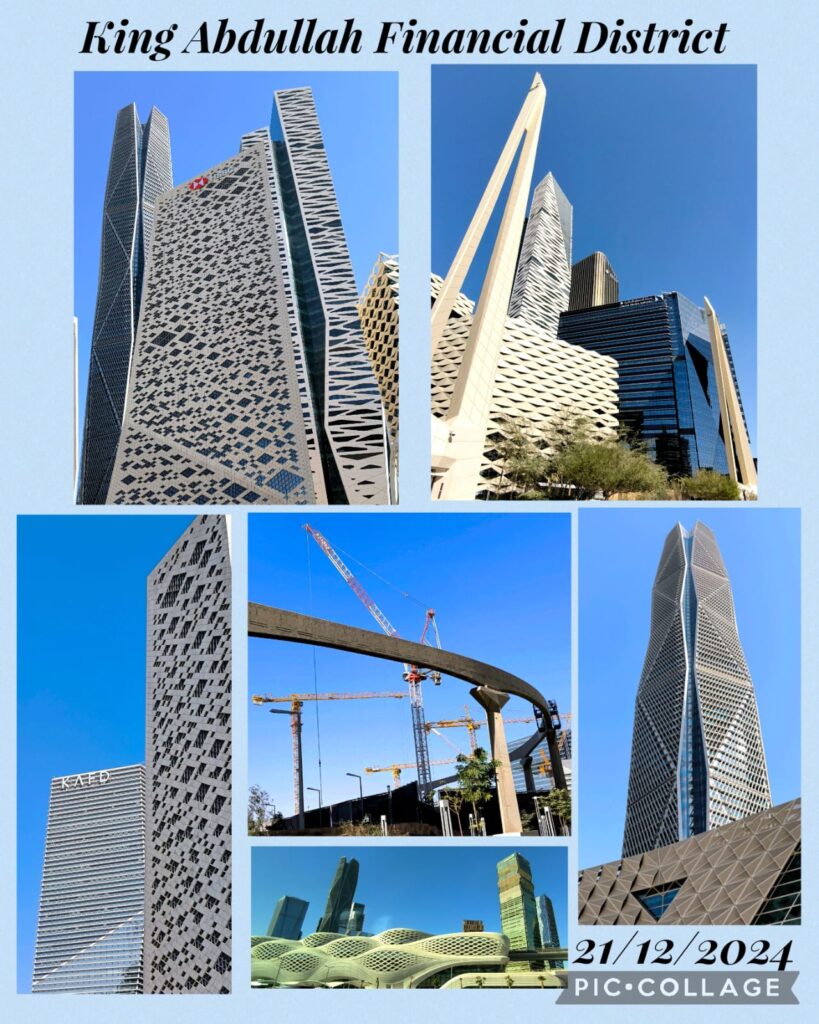
The second stop was the modern King Abdullah Financial District (KAFD) founded in 2007, which is now a wholly-owned subsidiary of the Kingdom’s Public Investment Fund. The project consists of 95 buildings with more than 6.1 million sq meters of space. Upon completion, it is expected to host 50,000 residents. The area will be served by a 3.5-km long monorail and all buildings will be linked by an air-conditioned skywalk system. We also visited the award-winning Grand Mosque.
It was well after 2pm when we had our first Saudi lunch in a wonderful local restaurant. Kylie and I shared a large plate of rice and mutton: the food was delicious and cheap (about SAR50)
The third stop was the Saudi National Museum which covers from the prehistoric to the modern ages in eight galleries. We were given just over an hour to visit it. I decided to walk on my own and confessed I did not register much after a whirlwind visit. Then we walked to the nearby Murabba Palace which was closed by the time we reached it. We drove a short distance to see the Masmak Fortress which is under restoration. We proceeded on foot to Alsafat Square and saw the Safat Clocktower and explored the traditional markets (souq) selling men’s clothes, shoe, perfume, incense etc. We admired the elegant and hand-made thawb for men. Fatmah took us to a 200-year-old shopping street (Abd Al Wahid Charafeddine) before ending our walk at the A’Thumairi Gate, one of the remaining gates of the area. When we stopped in a shop selling traditional sticks, a Saudi man with a young son bought each of us a stick with a horse head as a souvenir (SAR50 each). Saudis are very generous and welcoming! We had a full and tiring day. I was glad to get back to the hotel before 8 pm.
Day 3: 22 December – Ushaiger – Unaizah – Buraydah
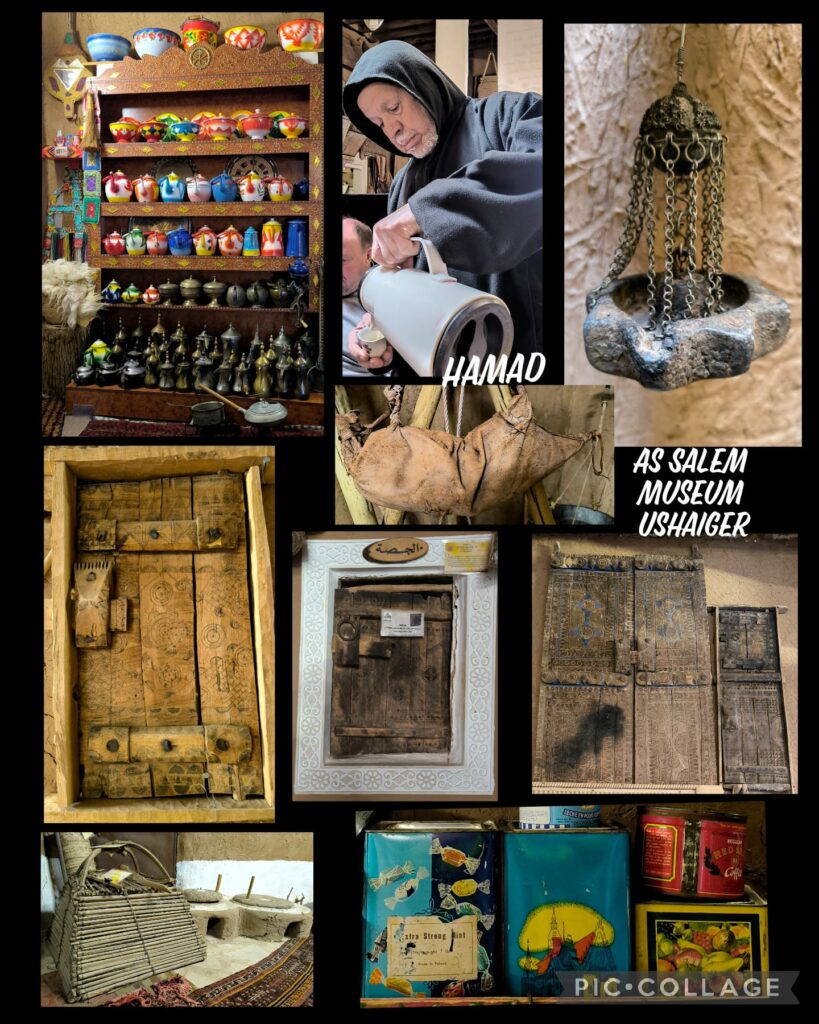
We departed after breakfast and drove some 200km to Ushaiger, one of the oldest settlements in the Najdi region. Historically it belongs to the Tamim tribes and is the homeland to many families in the peninsula including the Al-Thani family that rules the state of Qatar. Some 5,000 people used to live in this village before moving to a new village with modern facilities over 50 years ago. We first visited the As Salem Museum run by Hamad, a very smart and healthy 86-years-old man. He has collected all sorts of stuff ranging from storage for dates, cage for chicken, grinders, plates, pots and pans, clocks, guns, radio and a 200-year-old tin container from Holland. The village comprising houses of irregular shapes and narrow alleys are atmospheric and photogenic. Over 95% of the mud houses is dilapidated. The best preserved mud building is the mosque with a lower floor that is still in use. Kent and Kylie even climbed the minaret. A few houses have been nicely restored.
After a late lunch, we drove to Unaizah which historically was an important stopping point for Muslims coming from Mesopotamia (now Iraq) and Persia (now Iran) on their way to Mecca. The main attraction here is the Al Bassam Heritage House constructed between 1374 and 1378, a remarkable example of Najdi architecture. We had a good guide who explained the intricate designs, ceilings, doors, windows, and the tamarisk wood features. I am particularly interested in the painted wooden doors and made a collage of the doors with Najdi patterns.
After a guided tour, we had a great time enjoying Arabian coffee with local dates followed by tea and ginger tea. Our host also sang for us. After bidding our host goodbye, we drove some 30 km to reach Buraydah, capital of the Qassim Province to spend a night.
Day 4: 23 December – Buraydah – train to Hail
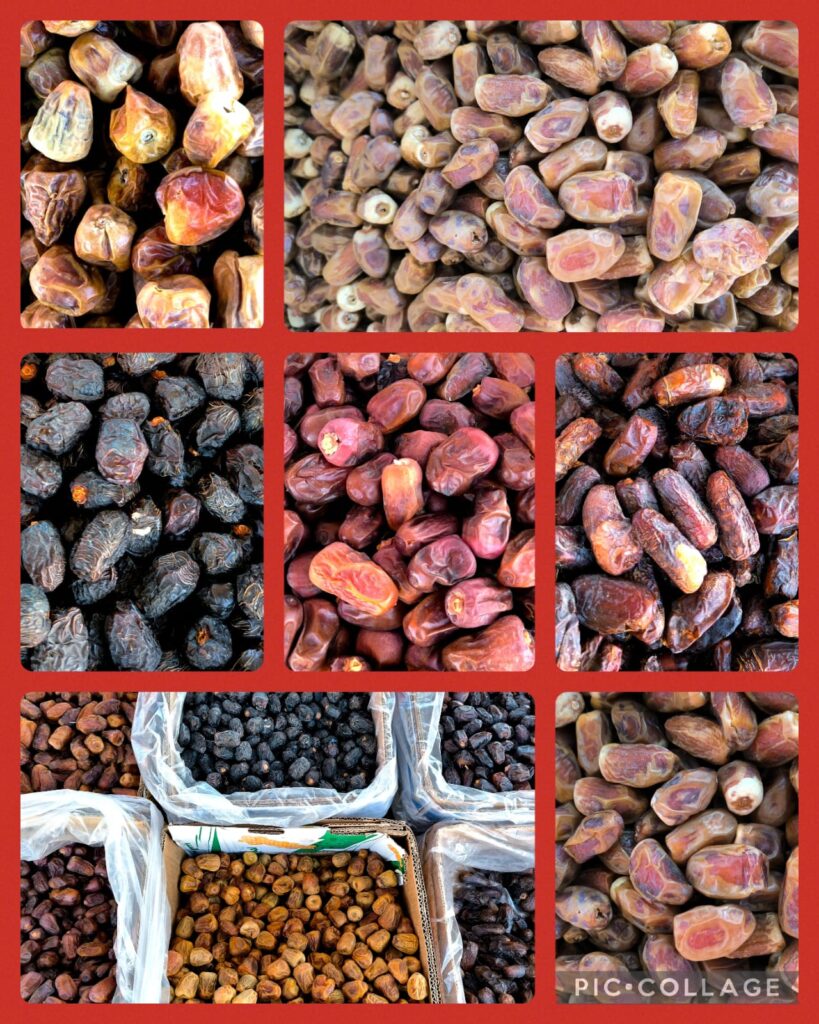
Buraydah, known as the city of dates with extensive variety of dates, has the world’s largest camel market. In order to watch auctions at the camel market, we started at 6:30 am, reached the market around 7 am and spent an hour watching how camels were brought in by trucks and the auction process. Half a dozen of camels for meat from Africa only fetched about 1200 SAR. Young camel a few weeks old might get a few hundred SAR. Then we watched a male camera charging in and mated with a female. Fatmah took us to see a sheep market nearby before heading to the world’s biggest date market. As it was not in season, the expansive market was virtually empty except a dozen of trucks were selling dates at the carpark. Fatmah bought 3 kilos of dates for SAR20! A bargain. We were back in the hotel for breakfast after 10 am. After a short rest, we set off before noon heading to the train station to get on a train around 1 pm to Hail.
We were back in the hotel for breakfast after 10 am. After a short rest, we set off before noon heading to the train station to get on a train around 1 pm to Hail. The journey took about two hours. The new train stations all have stylish modern designs and the train system was designed by the Spanish. We had a comfortable ride though there was no wifi in the train. At Hail station, Fatmah ran into an old friend Abdullah, a professional photographer. He later met us at the A’arif Fort and took photos for us. We spent a nice but short time at the fort watching amazing sunset. Then we went to Al Qishlah which was closed at 4 pm. We could not get in. No problem as we already had a long day. We had an early dinner and I shared an excellent lamb rice with Susan as Kylie did not want to eat.
Day 5: 24 December – Hail – Jubbah – AlUla
Today we began our exploration of SA’s rock art in Jubbah in the Nafud desert. In general, rock art includes pictographs, petroglyphs, engravings and petroforms and geoglyphs. In Jubbah, the ancestors of today’s Arab populations have left traces of their passages in numerous petroglyphs and inscriptions on sandstone rock faces. The artworks depict human figures and animals such as aurochs, cheetahs and lions since the neolithic or New Stone Age (10000 – 2200 BC). The oasis of Jubbah is the remnant of an ancient lake. Near the present day Jebel um Saman (“Two Camel-hump Mountain”), one finds some of the best rock art in the Arabian Peninsular. In 1879, Lady Anne Blunt , daughter of Lord Byron, and her husband Wilfred were amongst the first Westerners to discover the rock art. Archaeologist Juris Zarins (1945-2023) considers Jubbah the number one or two site in the whole of the Middle East that rivals anything in North Africa. We visited three different sites in Jubbah and I think what I have seen are amongst the best of their kinds and periods I have ever seen.
After a wonderful time at Jubbah, we had a memorable picnic lunch in the desert in Bedouin style with Abdullah. We then drove nonstop for almost seven hours before reaching the Mazham Boutique Farm in the Madinah Region for two nights. Today, we had a long day driving over 600km.
Day 6: 25 December – Hegra – Maraya – AlUla Old Town – Elephant Rock
We continued our exploration of SA’s ancient civilization today. We first went to Hegra, SA’s first World Heritage Site which relates to Nabataean history in the area with over 110 preserved tombs and other ancient wonders. Built between the first century BCE and the first century CE, Hegra was the Nabatean kingdom’s southern outpost until it was abandoned in the 12th century. This ancient city includes an impressive necropolis with tombs carved into sandstone set against the sweeping desert landscape.
We were told to arrive at the visitors’ centre around 9:15 am. Unfortunately the guide tour was delayed to 10:15 am. I therefore spent time in the centre which has illustrations on “Hinat“- the reconstructed face of a Nabatean woman whose remains were found in one of the 18 tombs in Jabal Ahmar. Fortunately, we had a nice guide and visited four locations. Jabal Ithlib is a natural mountain outcrop set featuring a natural picturesque passageway through the mountains and a venue for both banquets and meetings between city leaders. The second stop was Jabal Banat which is one of the largest tomb clusters in Hegra with 29 tombs carved into sandstone. Names of the people buried are found around the door frames together with other images including phoenixes, eagles, and snakes. The inside is however fairly barren.
The third stop was Qasr al-Farid (“the lonely castle”) which is the Tomb of Lihyan Son of Kuza. This unfinished tomb is Hegra’s largest tomb about 72-foot tall. It shows how the tomb had been carved. Then we made our way to Jabal Ahmar where the remains of “Hinat”, daughter of Wahbu were discovered. Analysis of the tomb has established that it was built by Hinat and was the resting place of as many as 80 individuals.
After Hegra, Fatmah took us to Maraya, the world’s largest mirrored building standing out in a breath-taking and captivating desert with rugged mountain ranges. This iconic performance and event venue designed by an Italian architect has become a must-see in AlUla.
Then we had an hour’s walk in an ancient oasis with some restored mud houses before having a late lunch after 3 pm. Susan, Fatmah, Kylie and I went to Somewhere, an elegant and one of the best restaurants in AlUla. We shared one beef and one chicken rice dish and had a delicious drink each. It cost over SAR 80 pp. Fairly pricy! Then we spent an hour in the old AlUla town before rushing to the iconic Elephant Rock to watch sunset. After sunset, we returned to the old town for another hour before returning to the eco-farm. A very full day! On reflection, I think we could have skipped Alula before the Elephant Rock so that we could have more time to enjoy the sunset.

